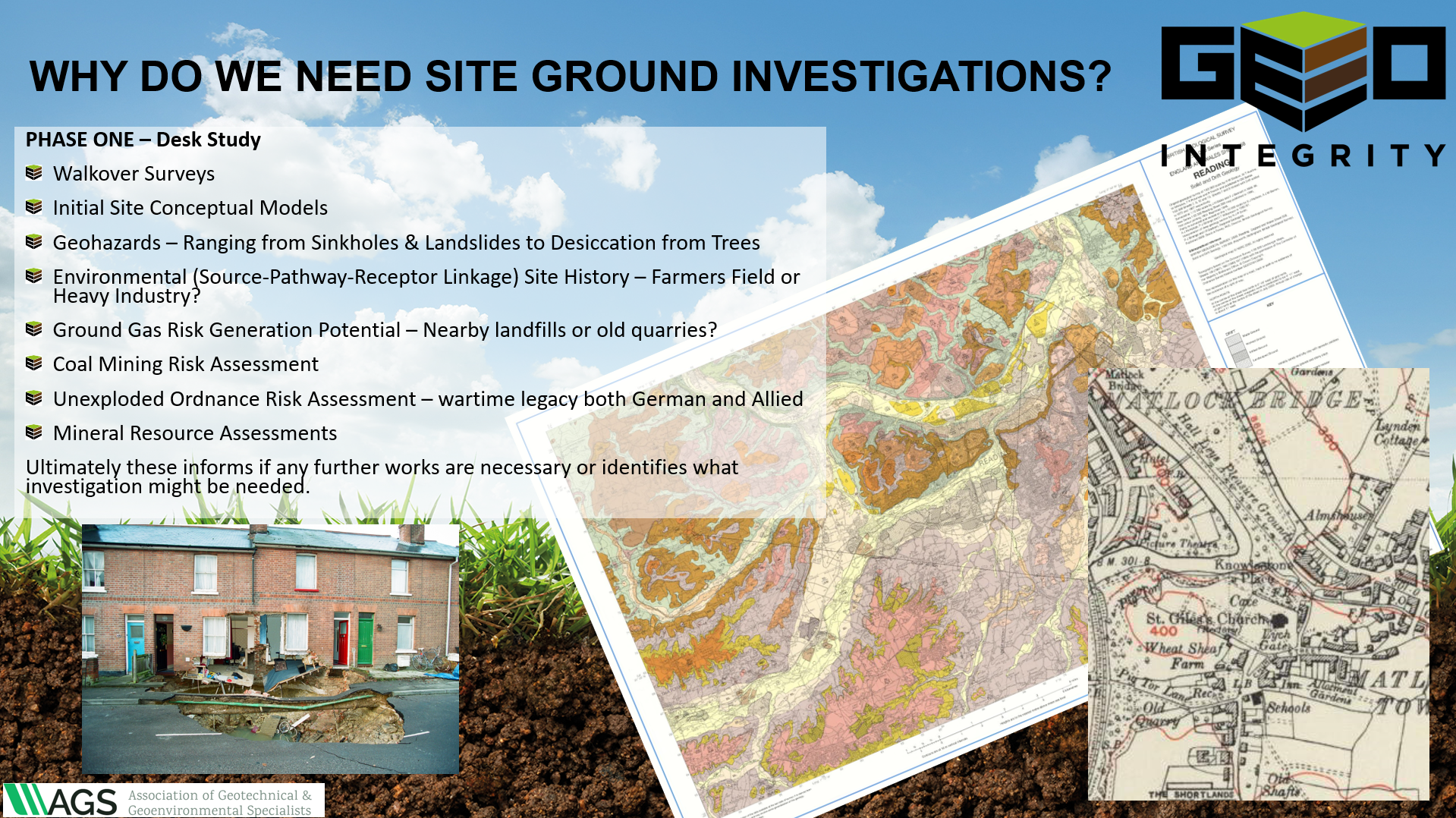16. May 2024
We recently provided a presentation to a valued client on a range of topics for their staff and graduate training programme. We enjoy reaching out to our colleagues across the industry, and if you think a short lunchtime CPD talk or seminar would be beneficial to your team, please let us know and we would be happy to visit. Our telephone number is 01280 816409 or drop us an email on info@geo-integrity.co.uk
08. May 2024
Before any construction project begins, conducting a thorough site investigation is paramount. This crucial step ensures that the construction process is safe, efficient, and cost-effective. Firstly, a site investigation helps identify potential hazards such as unstable soil conditions, or environmental concerns like contamination. Understanding these risks beforehand allows engineers and architects to design appropriate measures for mitigating them, ensuring end -user and worker safety and...
26. March 2024
Following on from our article in February we know learn that the UK government is looking to alter national planning policy with regards to brownfield land development. Their consultation on strengthening planning policy for brownfield land development marks a pivotal opportunity to address critical issues surrounding urban regeneration, housing affordability, and environmental sustainability in the UK. Brownfield sites, characterized by their previous industrial or commercial use, hold immense...
18. March 2024
We recently undertook a ground investigation on an interesting site in the city of Oxford. At first glance, it appeared that the site would involve a straight forward investigation for the redevelopment from a commercial land use to a residential land use. However, when undertaking the Phase 1 Desk study, it was revealed that this would not be the case. The site is recorded to be situated on the Oxford Clay Formation and the West Walton Formation, and historical maps showed the site was...
08. February 2024
A brownfield site is defined as land which has experienced previous development, however is no longer being used. The opposite of brownfield is greenfield which is defined as land which has never experienced development. The Government’s National Planning Policy Framework (NPPF) promotes the “effective use of land” making “as much use as possible of previously developed or ‘brownfield’ land”. This is attracting many developments on brownfield land as local authorities are...
02. February 2024
There are now more than 61,000 charge point connectors across the UK in over 22,000 locations - that's more public places to charge than petrol stations! Geotechnical investigations are crucial for the successful installation of electrical vehicle (EV) charging points. These studies assess soil composition, stability, and bearing capacity, ensuring a solid foundation for infrastructure. The investigations determine factors like soil type, moisture content, and geological conditions, influencing...
12. January 2024
At the beginning of January 2024, the NHBC published their new Standards for the year and this included a new chapter on the use of, and technical requirement for Engineered Fill that is put down to support residential development sites
05. January 2024
Site investigation boreholes in the UK are commonly drilled as part of geological and environmental assessments for construction projects, infrastructure development, and environmental monitoring. These boreholes play a crucial role in understanding subsurface conditions, assessing soil and rock properties, and identifying potential environmental risks.
06. September 2023
Solifluction is a geological phenomenon that occurs when soil on slopes becomes saturated, loses cohesion, and slowly begins to flow downhill. During the Ice Age when slopes were exposed to constant freeze/thaw and high volumes of groundwater, solifluction was widespread on clayey soils.
21. June 2023
We recently visited a local stonemason in Northamptonshire to undertake waste classification of the waste stone slurry created during the stone cutting process. Hand samples were collected of the stone slurry, and the processes in the Environment Agency’s WM3 were followed in order to classify the waste slurry for disposal. The waste slurry was tested for a range of contaminants (including metals, inorganic substances, PAHs, BTEX, TPH, asbestos) before a Hazard Assessment Screen was...










